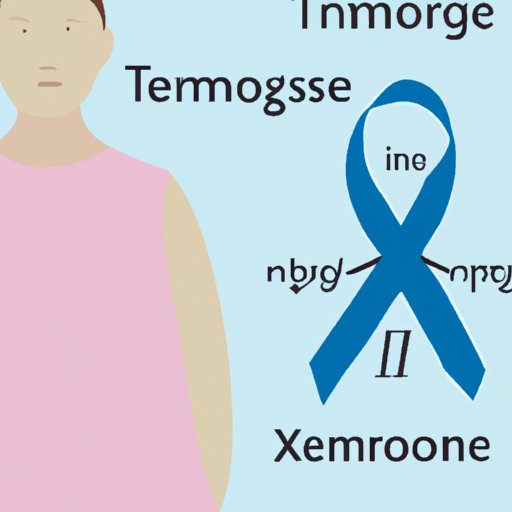Introduction
A miscarriage is defined as the spontaneous loss of a pregnancy before 20 weeks gestation. Although it is a heartbreaking experience, it is also a very common one – up to 25% of all clinically recognized pregnancies end in miscarriage. Despite its frequency, there is still much to be understood about the causes and risk factors associated with miscarriages.

Examining the Risk Factors of Miscarriage
There are many potential risk factors that can increase the likelihood of a miscarriage, including age, hormonal imbalances, lifestyle factors, and underlying health conditions. Let’s take a closer look at each of these.
Age
Age is perhaps the most significant factor associated with an increased risk for miscarriage. As women get older, their chances of miscarrying increase. Women over the age of 35 have a higher risk of miscarriage than younger women, especially if they are over 40.
Hormonal Imbalances
Hormonal imbalances, such as an underactive thyroid, can also contribute to an increased risk of miscarriage. Additionally, women with conditions such as polycystic ovary syndrome (PCOS) or endometriosis may be more likely to experience a miscarriage.
Lifestyle Factors
Lifestyle factors can also play a role in the risk of miscarriage. Smoking, drinking alcohol, and using recreational drugs can increase the risk of miscarriage, as can being overweight or obese. Stress can also be a contributing factor, so it’s important to try to reduce stress levels during pregnancy.

Exploring When Miscarriages are Most Common
Miscarriages are most common during the first trimester of pregnancy, usually occurring between weeks 6 and 12. However, miscarriages can occur at any point during a pregnancy, even after 20 weeks. The risk of miscarriage begins to decrease after 12 weeks of pregnancy.
Common Time Frame for Miscarriages
The majority of miscarriages happen during the first trimester of a pregnancy. This is because the fetus is still developing and is more vulnerable to abnormalities that could lead to a miscarriage. During this period, the risk of miscarriage is highest during the first eight weeks after conception.
Risk of Miscarriage in Different Age Groups
As mentioned earlier, age is a significant factor when it comes to the risk of miscarriage. Women under the age of 35 have a lower risk of miscarriage than those over 35. For women over 35, the risk increases with age, with the highest risk of miscarriage occurring in women over 40.

Investigating the Causes of Early Miscarriage
While the exact cause of a miscarriage is often unknown, there are several potential causes that can lead to a miscarriage. These include chromosomal abnormalities, infections, and structural abnormalities.
Chromosomal Abnormalities
Chromosomal abnormalities are one of the most common causes of early miscarriages. These abnormalities occur when there is an issue with the fetus’ chromosomes, which can lead to genetic disorders and developmental problems.
Infections
Infections, such as rubella or toxoplasmosis, can also be a cause of miscarriage. These infections can be passed from mother to baby during pregnancy, leading to a miscarriage.
Structural Abnormalities
Structural abnormalities, such as a uterine septum or fibroids, can also lead to a miscarriage. These abnormalities can cause the uterus to be unable to support the pregnancy, leading to a miscarriage.
Understanding the Prevalence of Miscarriage in Different Age Groups
The prevalence of miscarriage in different age groups varies significantly. For women under 35, the risk of miscarriage is 10-15%, while for women over 35 the risk increases to 20-35%. For women over 40, the risk of miscarriage is approximately 50%.
Looking at the Impact of Miscarriage on Women’s Health
The physical and emotional effects of miscarriage can be significant. Women who experience a miscarriage may experience physical symptoms such as cramping, bleeding, and fatigue. Emotionally, women may experience feelings of guilt, sadness, and grief.
Physical Effects
Physical effects of a miscarriage can vary depending on how far along the pregnancy was. In some cases, a woman may need medication or a procedure to help her body pass the tissue of the fetus. This can lead to cramping and bleeding, as well as fatigue and other physical symptoms.
Emotional Effects
The emotional effects of a miscarriage can be difficult to cope with. Women may feel a sense of guilt or failure, as well as sadness and grief. It is important to seek professional help if you are struggling to cope with the emotional effects of a miscarriage.
Treatment Options
If a woman experiences a miscarriage, it is important to seek medical attention. Treatment options may include medications to help the body pass the tissue, or a surgical procedure to remove the tissue. In some cases, hormone therapy may be recommended to help the body recover from the miscarriage.
Conclusion
Miscarriage is a heartbreaking experience for many women. It is important to understand the risk factors, causes, and prevalence of miscarriage in different age groups. Knowing the signs of a miscarriage and seeking medical attention is essential for women who experience one. It is also important to seek professional help if you are having difficulty coping with the physical and emotional effects of a miscarriage.


